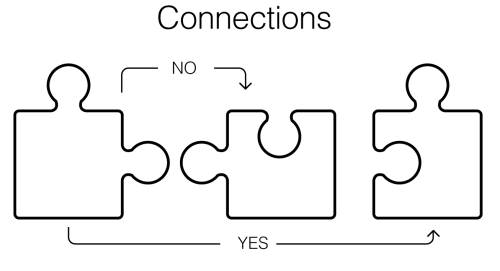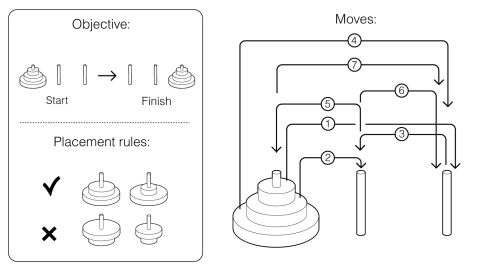Puzzles are very popular and are liked by both game developers and players because they do not need much screen space and can perfectly fit device resolution. Gameplay is generally based on several basic rules, and only few game pieces are required. But the variety of game situations is very high, so such games are costly but effective; the assets are simple, but the game process is very addictive. Many of these games are played over and over again because there are an almost infinite number of combinations and new challenges are born constantly. These combinations and new challenges make the players feel very much connected to puzzles.
Card/board games are about the comparison of game elements, but puzzle games in general are about relations between objects. One detail must be connected with a corresponding detail. The following figure shows a simple puzzle game:

There is a poetic or even philosophical aspect to puzzles: a player attempts to assemble something that once was broken into pieces. He is almost like Kai, a character from the Hans Christian Andersen fairy tale, The Snow Queen, who was trying to assemble a word—"eternity"—from fragments of broken ice. In a broad sense, each puzzle is an image disassembled into components that are shuffled; some of the details are hidden, some traps and obstacles are scattered, and after that, this "dish" is presented to the player. Now he must find all the invisible strings that connect the elements and must re-form the image. Come to think of it, the most ancient puzzle will have been that of a ceramic vase, accidentally broken, and the craftsman who pieced it back together will have been the first puzzle player.
The following figure shows the infographics for the Tower of Hanoi:

The connections in puzzles are checked by a list of special conditions. The right illustration for this is the famous puzzle game, the Tower of Hanoi. It consists of three rods and several disks. For the sake of simplicity, let's consider only three disks; the disks have different radiuses. By default, all of them are collected in a stack on the first rod, the largest disk is placed at the bottom, and the smallest one is on the top. The objective is to transfer them to the third rod; the solution seems very obvious, but there are some special conditions: for each move, a disk should be placed on a rod and the player cannot keep it in his hands or at any other place, while another rule says that an individual disk can be put only on a disk with a bigger radius. Now you see that it is harder than it seems at first sight. To complete the puzzle, the disks are moved back and forth, and the player tries to obey the rules. Three disks require seven moves, while four disks can take as many as 15 moves!
